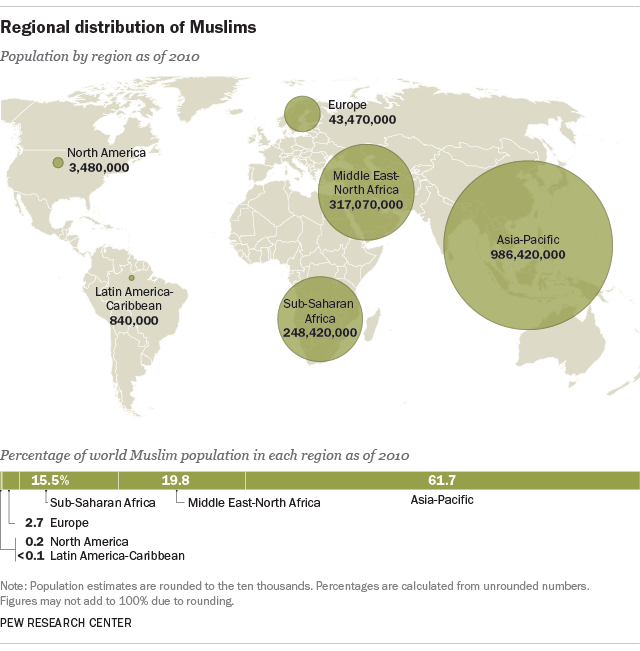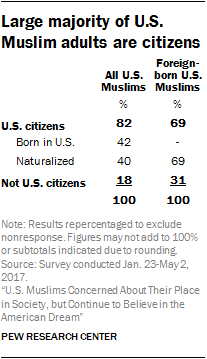To begin, there have been three very prominent instances in my life so far that follow similar themes that connect both religion, race, and ethnicity and the assumptions and racist microaggressions that come with it. For reference, I am an Indonesian-American Muslim woman who wears the hijab or the headscarf.
The first instance was my freshman year of high school, which was also my first year of public school ever. My close friend of many years, who also wears the hijab and who had been in public school longer than I have, introduced me to one of her friends, another hijabi. We hit it off for the most part, but it wasn’t until a few months later that I discovered that she had actually asked our mutual friend, in the beginning, if I was Muslim. Me, who actually wears the hijab almost the exact same way she does.
Another incident that happened to me that was very similar to this was when a friend of mine, when we were high school, walked past my dad in the hallway on his way back to our class. My dad was picking me up to take me to an appointment and was waiting for me to come out of my class. I told my friend that he probably passed by my dad on his way back and he just looked at me weird. He asked, “That’s your dad? He doesn’t really look Muslim.” At the time, I just brushed it off since I knew very well the implications and assumptions that came with being Muslim. However, later on down our friendship, when we were much closer, I brought it up again, not to fault him, but so that we could have an intellectual conversation about it. It was really good for the both of us.
And lastly, which was most recent, something happened at the Chinese restaurant I work as the cashier at. The restaurant was originally owned by a Chinese couple, but their Indonesian son-in-law, my current boss, took over the restaurant a couple years ago. Most of my coworkers are also Indonesian. Last week, an older white man came in and I greeted him like I do with all incoming customers. He was very nice and I could tell he was very outgoing just from the first few seconds I interacted with him. However, once he reached the front counter, he joked and said something along the lines of “you guys can continue talking in your language, you don’t have to switch on my account.” Now, at first, I was confused because I actually don’t speak Indonesian very well and I just use English with my coworkers anyway, so I wasn’t sure how he came to the conclusion that we were speaking a different language when he came in. I shook the thought away though and lightly laughed because I thought that perhaps he heard only my coworkers in the back speaking to each other. He then proceeds to say that he actually knows some words in our language. I was surprised for a second time because Indonesia is a very underrepresented country and not many people know or learn the language unless you are Indonesian. However, he continues and says that he knows “assalamu alaikum” which is an Arabic/Islamic greeting and “shukran” which is how you say thank you in Arabic. For the most part, I was amused and I then nicely explained that those phrases were in Arabic and that we were actually Indonesian, not Arab. The man was definitely a little surprised, but he was quite open-minded about it and even asked me how to say certain things in Indonesian. I tried my best to teach him some things, but I also explained how I don’t actually speak Indonesian well. He laughed, took his food, said goodbye and left.
There are many things to unpack here with all three instances. What I think is the most prominent, is how they all assumed something different about my ethnicity and race because I was Muslim. In the first story, my friend couldn’t quite grasp that an Asian person could be Muslim. In the second, my other friend couldn’t quite grasp the same thing except about my father. And in the third, this man assumed we were all actually Arab because I was wearing the hijab. No one else was even Muslim in the restaurant besides myself.
 I think that the way the media, especially the news and movies, portrays Muslims, they never show that Islam is a religion, not a race or an ethnicity. I don’t even look Arab. In fact, I have been mistaken for Chinese or any of the other well-known East Asian countries too many times to count, but that is something for another time. I don’t take these assumptions personally, but I can and will acknowledge how problematic they are. Indonesia is actually the most Muslim populated country in the world, but no one really knows that. Most everyone assumes that people that are Muslim are Arab, Pakistani, or Indian. It also doesn’t help that the few times Muslims are in the media, we are often portrayed as terrorists or the “villains”.
I think that the way the media, especially the news and movies, portrays Muslims, they never show that Islam is a religion, not a race or an ethnicity. I don’t even look Arab. In fact, I have been mistaken for Chinese or any of the other well-known East Asian countries too many times to count, but that is something for another time. I don’t take these assumptions personally, but I can and will acknowledge how problematic they are. Indonesia is actually the most Muslim populated country in the world, but no one really knows that. Most everyone assumes that people that are Muslim are Arab, Pakistani, or Indian. It also doesn’t help that the few times Muslims are in the media, we are often portrayed as terrorists or the “villains”.
I think that being visually and/or openly Muslim in America is already grounds for the concept of Othering, but it can also be argued that Othering most definitely occurs within the Muslim community as well. When I am outside of the Muslim community, often times, people only see the hijab and assume I’m Arab or brown. When I’m in the Muslim community, the fact that I’m not Arab or brown is sometimes all they only see.
This all also essentially comes down to what people are exposed to and how educated they are about other cultures and religions. Islam gets barely brushed over sometimes in history classes, but otherwise, there is almost never any formal education about Islam and with it, the proper demographics of people who practice it. The same goes for any other religion except Christianity. Because of this, the only thing most people have to go off of is the media, which  isn’t too favorable for the image of Islam.
isn’t too favorable for the image of Islam.
Although this isn’t present in the first two stories, I also want to address how the man in the third story assumed that “my” language wasn’t English. I had never given him any reason to think otherwise. I was born in Illinois and my family only spoke English around me. I can’t speak Indonesian well and I rarely do because of that. I wasn’t even speaking to anyone before he came in. He only saw my headscarf and it just didn’t occur to him to look past it and all the preconceived notions he had in his mind.
In all three instances, no one had malicious intent or intentionally discriminated against me, but they nevertheless succeeded in reminding me that I am not normal nor the standard. They reminded me that I am too different from their expectations, that they are essentially the One and I am the Other. Although I don’t take things personally, it can still be damaging and this is, indeed, a systemic injustice involving the media and the education system. It can be damaging to other people, who don’t fully understand the systemic workings behind these incidents and will take it personally. And the thing is, these people don’t even realize the weight behind the things they comment or ask. In conclusion, It is extremely important for people to educate themselves and understand that they can inflict these hurtful microaggressions on others. No one should have to bear that weight anymore.
Works Cited:
“Demographic Portrait of Muslim Americans.” Pew Research Center’s Religion & Public Life Project, 30 May 2020, www.pewforum.org/2017/07/26/demographic-portrait-of-muslim-americans/.
“World Muslim Population More Widespread Than You Might Think.” Pew Research Center, 31 May 2020, www.pewresearch.org/fact-tank/2017/01/31/worlds-muslim-population-more-widespread-than-you-might-think/.